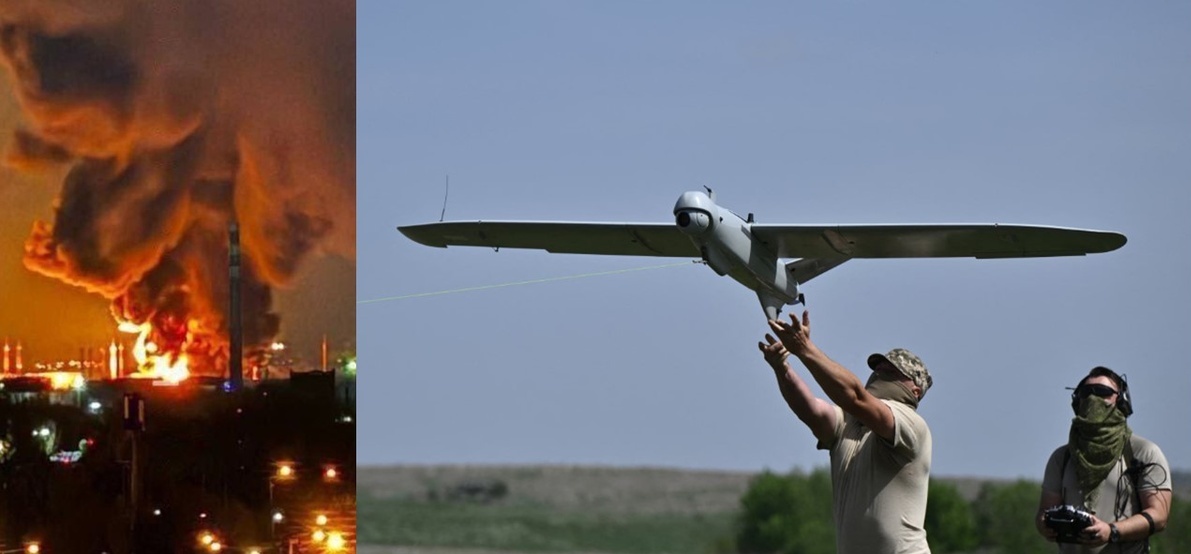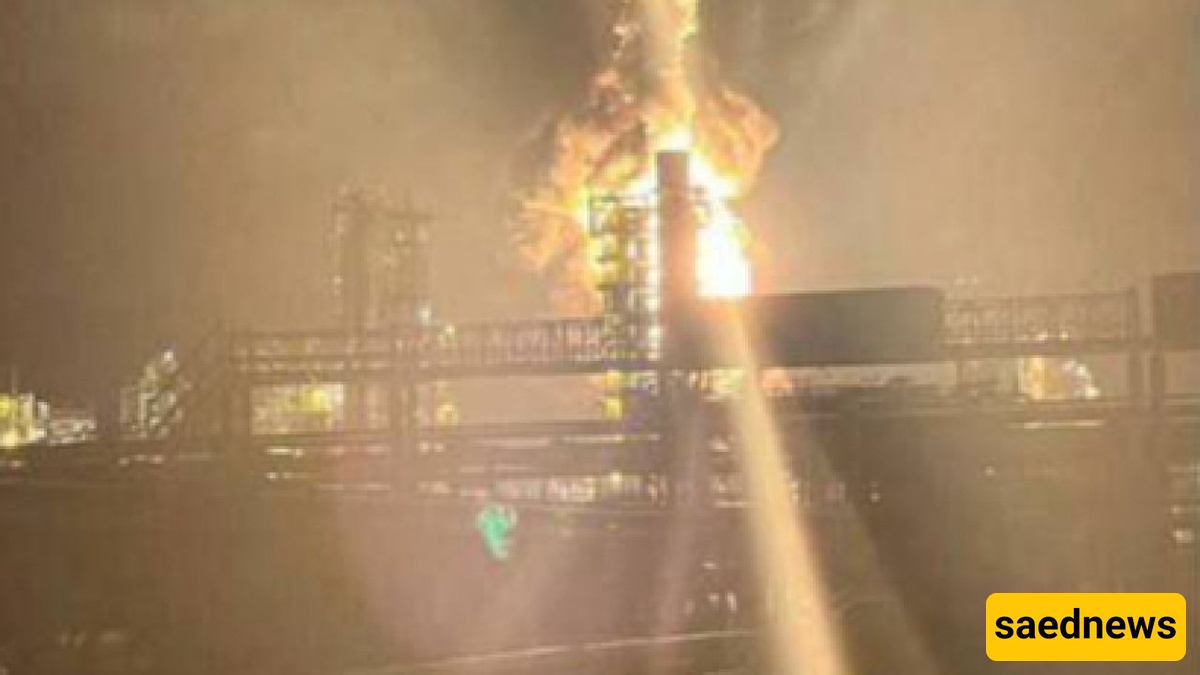SAEDNEWS: Ukraine’s recent drone attacks on Russian refineries and oil infrastructure are causing widespread fuel shortages, crippling exports, and threatening the Russian war effort.

According to Saed News; Ukraine has intensified attacks on Russian refineries and energy infrastructure, worsening fuel shortages across the country while targeting key export terminals. These strategic strikes are part of a two-pronged plan designed to hit Russia’s economy and military at their energy lifeline.
Last week, Ukraine struck the Kirishinefteorgsintez refinery, Russia’s second-largest refinery, cutting 40% of its processing capacity. Two days later, drones targeted the Saratov refinery, a crucial supplier for Russian military operations.
Ukrainian President Volodymyr Zelenskyy stressed the importance of these attacks: “The most effective sanctions – the ones that work the fastest – are the fires at Russia’s oil refineries, its terminals, oil depots.” He added that Russia’s war depends heavily on oil, gas, and other energy resources.

Reports from Russian state media Izvestiya indicate that fuel shortages have spread to 10 Russian regions, including Ryazan, Nizhny Novgorod, Saratov, Rostov, and even Crimea. Petrol stations have been forced to close after weeks without deliveries, confirmed by both the Russian Independent Fuel Union and regional governors.
Ukraine has now struck at least 10 major Russian refineries, and its Unmanned Systems Forces estimate that Russia has lost one-fifth of its refining capacity. Zelenskyy warned that the Russian war machine will falter when it runs out of fuel.
Ukraine is not only disrupting domestic supplies but also targeting Russia’s energy exports. On Friday, Ukrainian drones struck Primorsk, Russia’s largest oil offloading terminal on the Baltic Sea, causing a fire and forcing the terminal to suspend shipments. Pumps along the Transneft Baltic Pipeline System-2 were also hit, affecting oil transport to Ust-Luga port.
Oil and gas revenues account for one-third to half of Russia’s federal budget, making these strikes a direct blow to Moscow’s war financing. Russia has banned refined petroleum exports and tried to shift to crude oil shipments, but Ukrainian strikes are disrupting storage and transportation, potentially forcing output cuts.
Poland called for a full EU ban on Russian oil imports after 19 Russian drones entered its airspace on September 10. While most EU countries already ban Russian oil, Hungary and Slovakia have exemptions until 2027. European Commission President Ursula von der Leyen has proposed speeding up the phase-out of Russian fossil fuels, highlighting the growing pressure on the bloc to tighten energy sanctions.
Despite the EU’s restrictions, gas imports from Russia continue, with Europe paying roughly $23.6 billion last year, nearly $5 billion more than military aid sent to Ukraine. Zelenskyy urged all partners to impose stricter sanctions to force Russia toward peace.
On the frontlines, Russian troops captured three villages in Dnipropetrovsk and Zaporizhia regions over the past week. For the first time, Ukrainian Commander-in-Chief Oleksandr Syrskii dismissed retreating officers responsible for these losses, signaling a tougher approach toward territorial setbacks.
The Institute for the Study of War reports that Russian forces have taken 1,910 sq km of Ukrainian territory since May, at a cost of 130,000 casualties, averaging 68 casualties per square kilometer. Despite these gains, Ukraine’s strategic strikes on fuel and exports are designed to impose long-term costs that far outweigh temporary land losses.
Ukraine’s energy-focused campaign is a game-changer. By targeting both domestic fuel supplies and export revenue, Kyiv is hitting the backbone of Russia’s war economy. Experts say continued drone attacks and EU sanctions could drastically limit Russia’s operational capacity and pressure the Kremlin politically.
Zelenskyy’s strategy combines battlefield resistance with economic warfare, demonstrating a modern approach to crippling an opponent without direct territorial conquest. If the strikes continue to succeed, they could reshape the trajectory of the war and force Moscow to rethink its strategy.
Ukraine’s strikes on refineries, pipelines, and terminals represent a calculated escalation that could significantly weaken Russia’s military power, disrupt its energy exports, and hasten the eventual end of the war. For now, fuel shortages are spreading across Russia, signaling that Kyiv’s high-stakes energy strategy is already working — and that the Kremlin may be running out of options.

